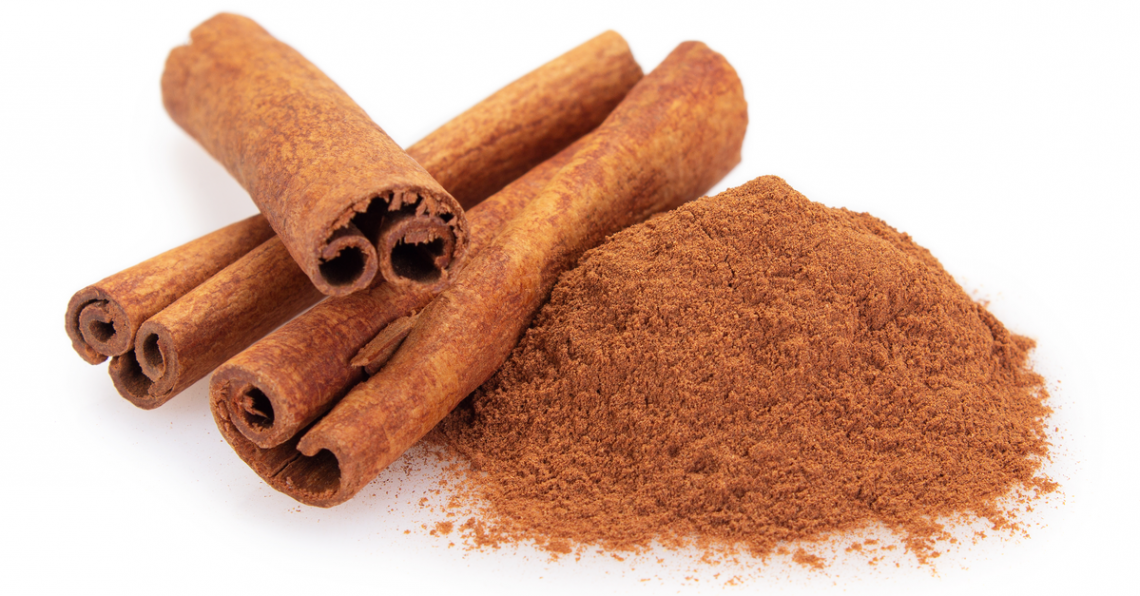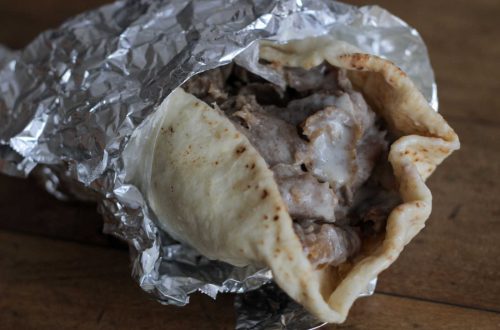
Cinnamon: Think Outside the Bakery
Cinnamon has always been my favorite spice. In my youth, toast with sugar and cinnamon was a breakfast treat. And on occasion, there were cinnamon rolls. When my mother made pies, she’d roll out the leftover pie dough, spread it with butter and cover it with sugar and cinnamon, then roll it up into a long rope, cut it into inch-long pieces, and bake it on a cookie sheet. I loved the smell of the warm cinnamon as it baked in the oven.
When I was a bit older, my mother began making lefse during the holidays. This Norwegian-American recipe involves making a potato-based thin pancake that resembles a flour tortilla. In my mother’s case, she took them warm off the griddle, slathered them with butter, and then coated them with sugar and cinnamon (of course) and rolled them up. To make them more moist and savory, she then stored them for a day under a damp towel. Making lefse has become a family tradition at Christmas. I’m looking forward to the time that I can make it with my grandchildren and pass the tradition along to another generation.
A distinguished history
Doesn’t everyone love cinnamon? Originating in Ceylon, this inner bark of an evergreen tree was highly prized as a gift fit for monarchs. The ancient Egyptians used cinnamon in embalming mummies. Greeks used it to flavor wine, and it’s mentioned in several books of the Bible. In the Middle Ages, Venetian traders held a monopoly on the cinnamon trade in Europe, and medieval physicians used it in medicines to treat coughs, hoarseness, and sore throats. A 17th-century Italian harlequin comedy references a dish of macaroni with sugar and cinnamon. In modern times, it is especially prized in Mediterranean and North African cuisine for both sweet and savory dishes of chicken and lamb, in particular.
A versatile flavoring
My youth imbedded the idea associating cinnamon with baked sweets. But in the past decade or two, I’ve grown fond of using cinnamon in main-dish meals, especially beef and pork stews. The spice pairs well with meats, and it’s also good with pumpkin, squash, apples, and pears. Of course, a stick of cinnamon is a primary ingredient in making chicken mole.
As for beef stews, cinnamon can’t be beat. I use it in beef tagine, and it’s great in standard American versions, as well, and even a Bolognese sauce that makes a very savory ragout.
When it comes to pork, an easy combination is Pork Chops with Cinnamon Apples. But cinnamon is also good with chicken. In addition to the chicken mole, try Roasted Cinnamon Lemon Chicken that features caramelized onions along with the cinnamon and is both Paleo and gluten-free. And how about Cinnamon-Apricot Glazed Salmon?
Needless to say, I go through a lot of cinnamon. But how about you? Do you have a favorite spice? And how and when do you use it? Please click comment and share.
To comment, please click on “View in Browser” or on the headline to view the blog on the website. You can log in and comment at the end of the blog to share your thoughts and start a discussion. Best comment will receive the secret recipe for Mrs. Farmboy’s Oatmeal Cookies with Dried Cranberries and Pecans.
If you’d like to share the blog, click on the Facebook icon or one of the others. Thanks!





4 Comments
chuck Kennedy
I think I mentioned to you a favorite spice of mine: Lizano. It’s a Costa Rican take on Worcestershire Sauce. I used it in black beans and rice with chopped red and green peppers and diced onion. Good either hot or cold. I just ordered a bottle thru Amazon. Also available thru Walmart.
Heller Shoop
I have been enjoying this blog! I also enjoy a bit of cinammon in chili. The best version of this may be Cincinatti Chili. The ground beef simmers with stock, cinammon, cumin, nutmeg, tomato paste and other spices. It is served 2 way (chili over spaghetti), 3 way with cheese, 4 way with onion, 4 way with beans, and 5 chicken way (all of the above)!
kettleso
Yes, cinnamon is a common ingredient in Cincinatti Chili. My favorite is a Texas chunky chili without the beans. Also love a spicy black bean version with hamburger. Both have generous amounts of cinnamon.
Ellen Grau
Cinnamon has been used for medicinal purposes too.
There are 2 main types of cinnamon:
• Ceylon cinnamon: Also known as “true” cinnamon.
• Cassia cinnamon: The more common variety today and what people generally refer to as “cinnamon.”
10 Health and Metabolism Benefits of Cinnamon
1. Antioxidants protect your body from oxidative damage caused by free radicals such as polyphenols. In a study that compared the antioxidant activity of 26 spices, cinnamon wound up as the clear winner, even outranking “superfoods” like garlic and oregano. In fact, it is so powerful that cinnamon can be used as a natural food preservative.
2. Inflammation is incredibly important. It helps your body fight infections and repair tissue damage. However, inflammation can become a problem when it’s chronic and directed against your body’s own tissues. Cinnamon may be useful in this regard. Studies show that this spice and its antioxidants have potent anti-inflammatory properties.
3. In people with type 2 diabetes, 1 gram or about half a teaspoon of cinnamon per day has been shown to have beneficial effects on blood markers. It reduces levels of total cholesterol, “bad” LDL cholesterol and triglycerides, while “good” HDL cholesterol remains stable.
4. More recently, a big review study concluded that a cinnamon dose of just 120 mg per day can have these effects. In this study, cinnamon also increased “good” HDL cholesterol levels.
5. In animal studies, cinnamon has been shown to reduce blood pressure When combined, all these factors may drastically cut your risk of heart disease.
6. Cinnamon is well known for its blood-sugar-lowering properties. Apart from the beneficial effects on insulin resistance, cinnamon can lower blood sugar by several other mechanisms. First, cinnamon has been shown to decrease the amount of glucose that enters your bloodstream after a meal. It does this by interfering with numerous digestive enzymes, which slows the breakdown of carbohydrates in your digestive tract. Second, a compound in cinnamon can act on cells by mimicking insulin. This greatly improves glucose uptake by your cells, though it acts much slower than insulin itself.
7. Numerous human studies have confirmed the anti-diabetic effects of cinnamon, showing that it can lower fasting blood sugar levels by 10–29%. The effective dose is typically 1–6 grams or around 0.5–2 teaspoons of cinnamon per day.
8. Neurodegenerative diseases are characterized by progressive loss of the structure or function of brain cells. Alzheimer’s and Parkinson’s disease are two of the most common types.
9. Cancer is a serious disease, characterized by uncontrolled cell growth. Cinnamon has been widely studied for its potential use in cancer prevention and treatment.
10. Cinnamaldehyde, one of the main active components of cinnamon, may help fight various kinds of infection.
Cinnamon oil has been shown to effectively treat respiratory tract infections caused by fungi.
Not all cinnamon is created equal.
The Cassia variety contains significant amounts of a compound called coumarin, which is believed to be harmful in large doses.
Way to go Bro!